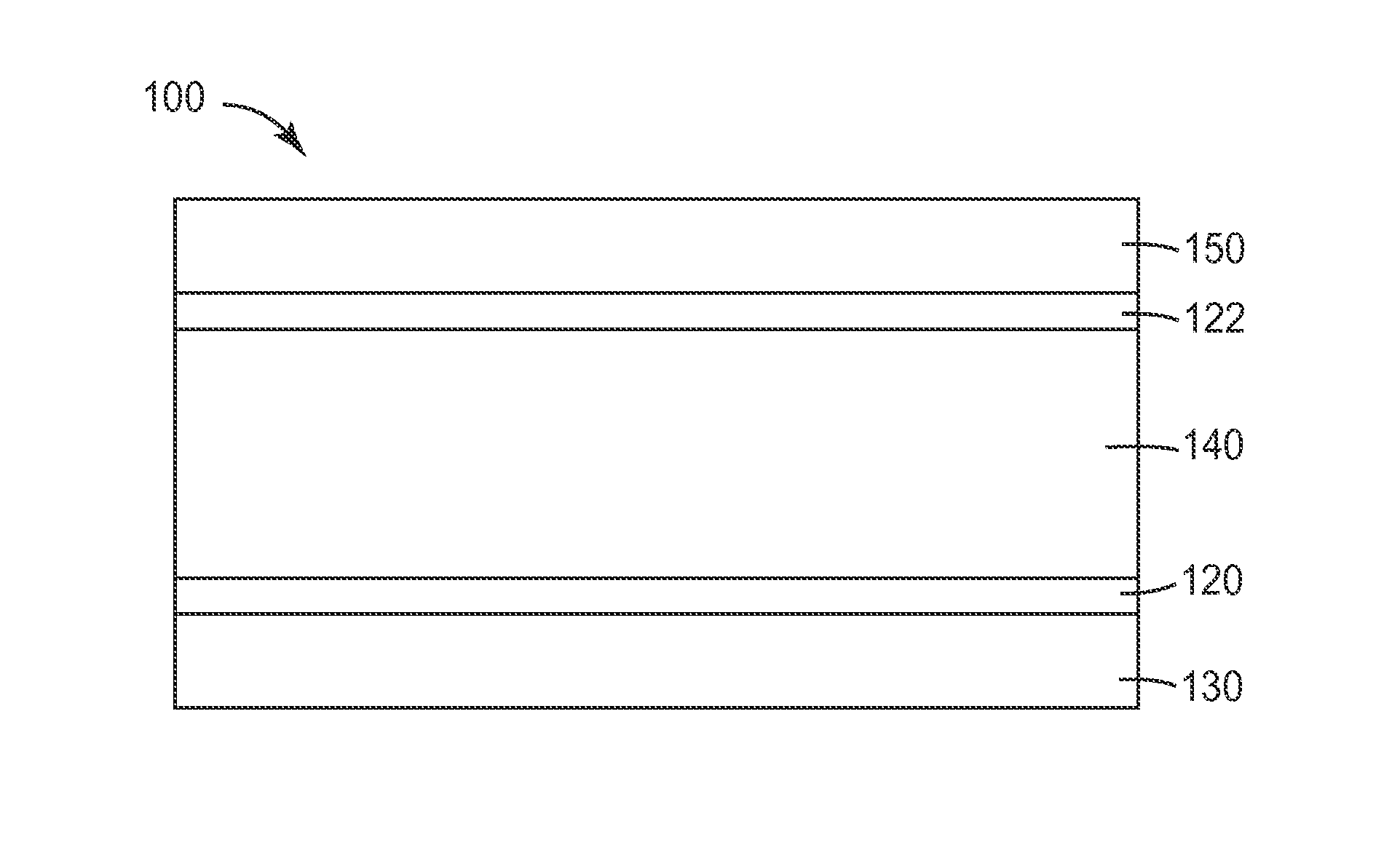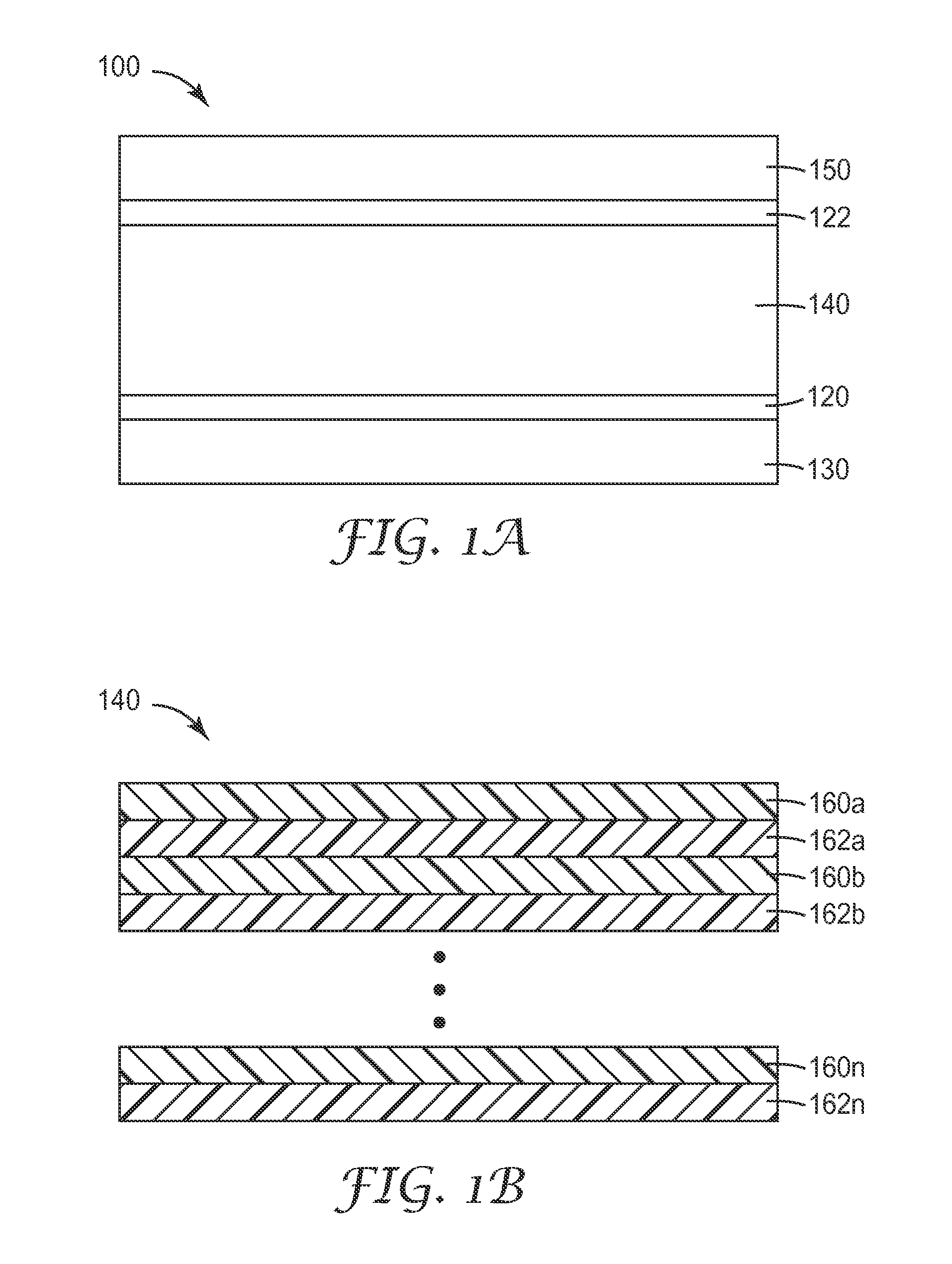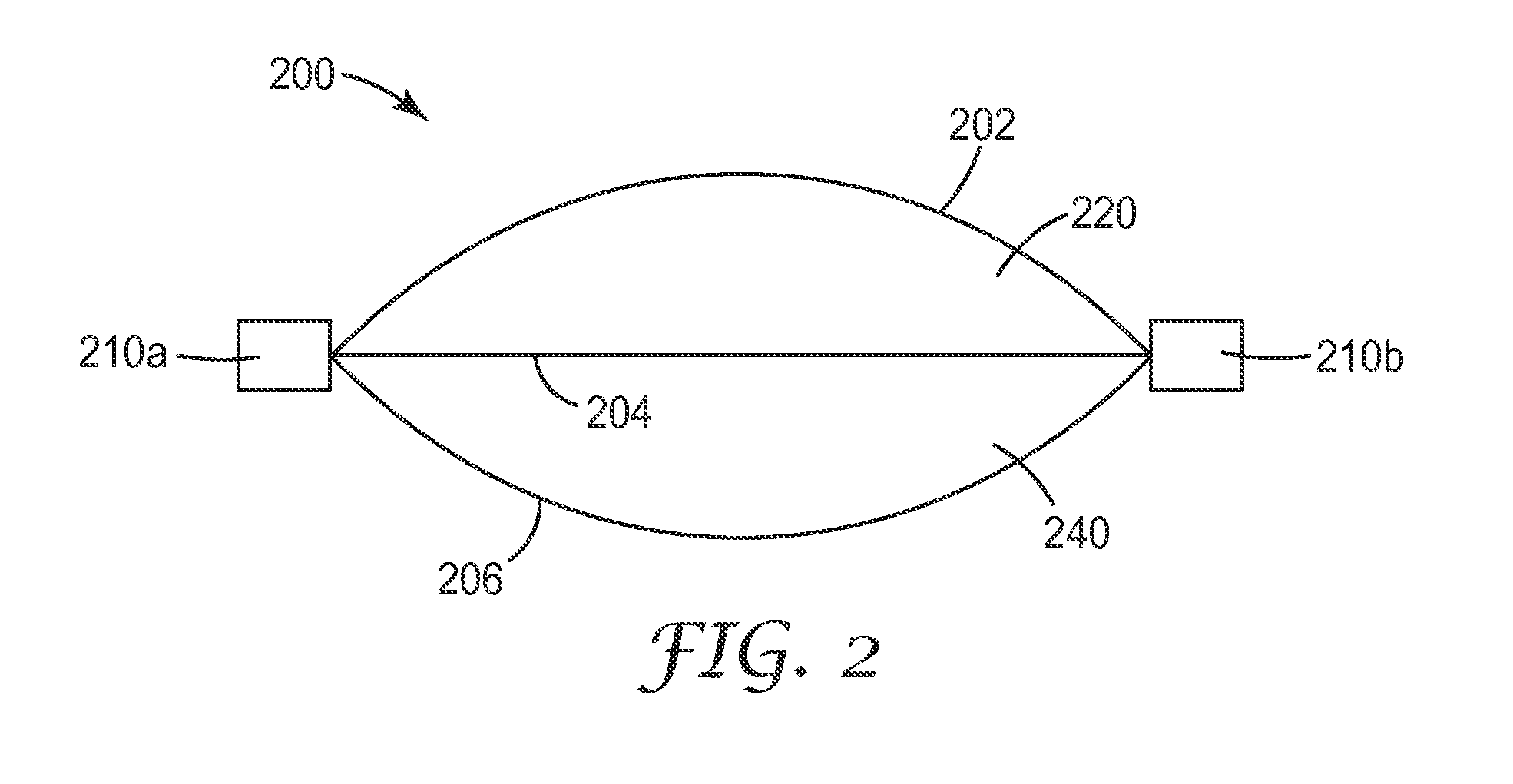Architectural articles comprising a fluoropolymeric multilayer optical film and methods of making the same
a technology of optical film and fluoropolymer, which is applied in the field of architectural articles comprising multi-layer optical films, can solve the problems of altering the mechanical and optical properties of the film, excessive heat in the interior of buildings using etfe films, and short shelf life, so as to improve the performance, reduce flammability, and/or ir-reflectivity, and improve the effect of transparency
- Summary
- Abstract
- Description
- Claims
- Application Information
AI Technical Summary
Benefits of technology
Problems solved by technology
Method used
Image
Examples
examples
The following specific, but non-limiting examples will serve to illustrate the disclosure. All parts, percentages, ratios, etc., in the examples are by weight unless indicated otherwise.
examples 1-12
Cast films of various fluorinated polymeric materials were made as follows. The fluorinated polymeric material was delivered at a rate X into a single screw extruder, which was run at a screw speed of Y. The extrudate was extruded at a suitable temperature and was cast onto a three-roll stack at a roll speed of Z and was wound. The thickness of each film was measured to be 500 micrometer (μm) thick with a micrometer gauge. Shown in Table 1 below is the Example, delivery rate in kilograms per hour (kg / hr), screw speed in revolutions per minute (rpm), and roll speed in meters per minute (m / min) for each of the samples tested. All fluorinated polymeric materials were obtained from Dyneon LLC., Oakdale, Minn. Each of the cast films was measured with a spectrophotometer (LAMBDA 950 UV / VIS / NIR from PerkinElmer, Inc., Waltham, Mass.).
TABLE 1DYNEONFLORINATEDDELIVERYSCREWROLLPOLYMERICRATESPEEDSPEEDEXAMPLEMATERIALXYZ1ET 62352.9 kg / hr20 rpm0.20 m / min2ETFE 6218X2.9 kg / hr20 rpm0.20 m / min3HTE 170...
example 13
A coextruded film containing 61 layers was made by extruding a cast web in one operation and later stretching the film in a laboratory film-stretching apparatus. Poly(methyl methacrylate) (sold under the trade designation “ALTUGLAS V O44” by Arkema Inc., Colombes Cedex, France), delivered by one extruder at a rate of 10 pounds per hour, copolymer of tetrafluoroethylene, hexafluoropropylene, and vinylidene fluoride (sold under the trade designation “DYNEON THVP 2030G X” by Dyneon, LLC.) delivered by another extruder at a rate of 17 pounds per hour, and poly(methyl methacrylate) for the skin layers delivered by a third extruder at a rate of 10 pounds per hour, were coextruded through a multilayer polymer melt manifold to create a multilayer melt stream having 61 layers with poly(methyl methacrylate) skin layers. This multilayer coextruded melt stream was cast onto a chill roll at 4.0 meters per minute (m / min), creating a multilayer cast web 10 mils (about 0.25 millimeter (mm)) thick a...
PUM
| Property | Measurement | Unit |
|---|---|---|
| wavelengths | aaaaa | aaaaa |
| wavelengths | aaaaa | aaaaa |
| wavelengths | aaaaa | aaaaa |
Abstract
Description
Claims
Application Information
 Login to View More
Login to View More - R&D
- Intellectual Property
- Life Sciences
- Materials
- Tech Scout
- Unparalleled Data Quality
- Higher Quality Content
- 60% Fewer Hallucinations
Browse by: Latest US Patents, China's latest patents, Technical Efficacy Thesaurus, Application Domain, Technology Topic, Popular Technical Reports.
© 2025 PatSnap. All rights reserved.Legal|Privacy policy|Modern Slavery Act Transparency Statement|Sitemap|About US| Contact US: help@patsnap.com



